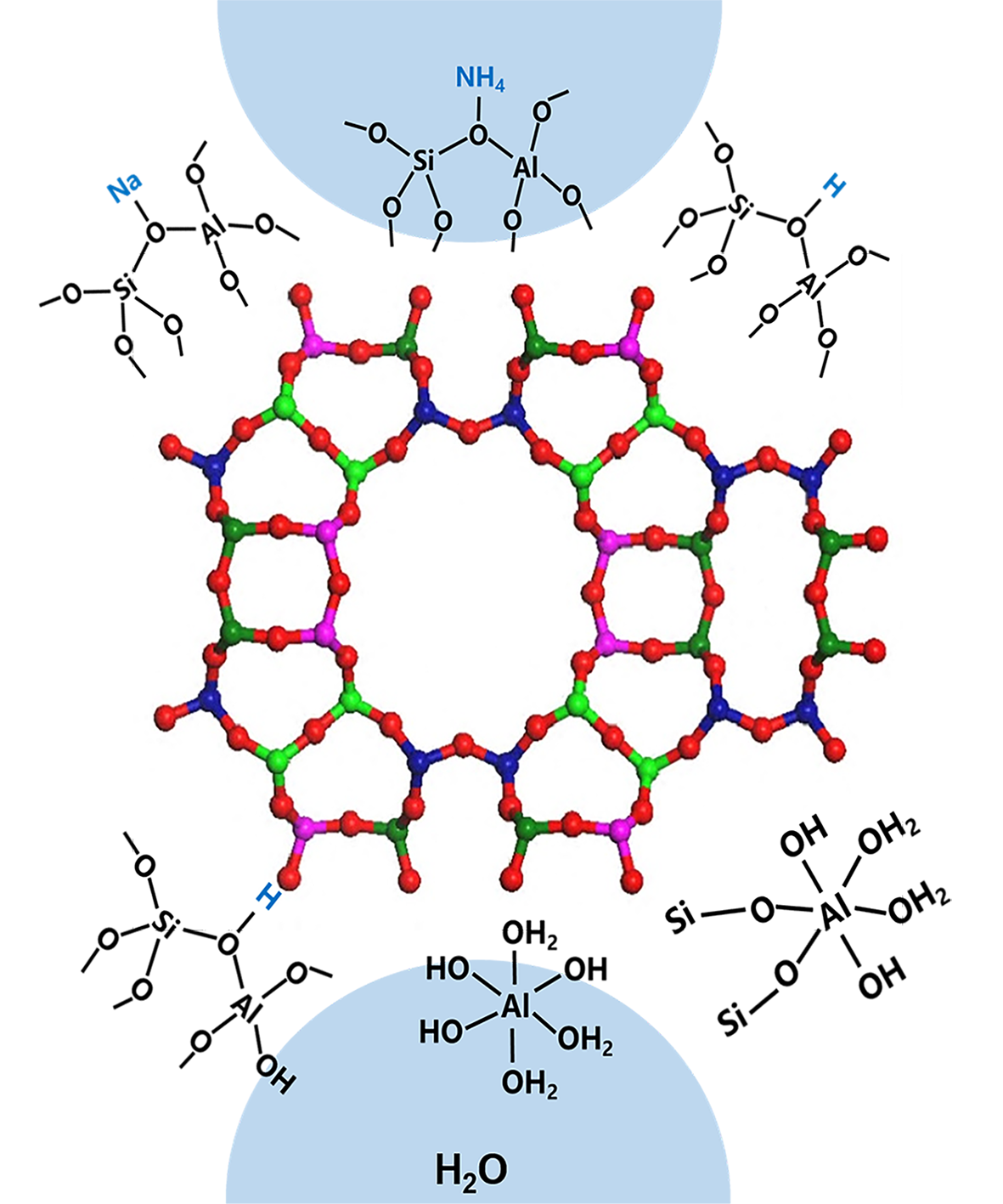
Templates for the synthesis of zeolites
Huimin Luan, Qinming Wu, Jianping Wu, Xiangju Meng*, Feng-Shou Xiao*
Submit a Manuscript
Xinzhi Ding, Chong Liu, Jing Niu, Nan Chen, Shutao Xu*, Yingxu Wei, Zhongmin Liu
Chin. J. Struct. Chem., 2024, 43: 100247. DOI: 10.1016/j.cjsc.2024.100247
April 15, 2024
H-MOR; Solid-state NMR; H2O; Framework aluminum stability; Dealumination
ABSTRACT
MOR zeolite has been effectively utilized for dimethyl ether (DME) carbonylation reaction due to its unique pore structure and acidity. During industrial production, the transformation of ammonium type MOR zeolite (NH4-MOR) into proton type MOR zeolite (H-MOR) causes inevitable dealumination. Therefore, understanding the influencing factors and dynamic evolution mechanism of zeolite dealumination is crucial. In this work, the stability of framework aluminum was studied by X-ray diffraction (XRD), Fourier transform infrared (FT-IR) spectroscopy, 29Si, 27Al, 1H magic angle spinning nuclear magnetic resonance (MAS NMR), and DME carbonylation performance evaluation. These results indicate that extra-framework cation Na+ and NH4+ could better preserve the aluminum structure of the MOR zeolite framework compared to H+, primarily due to the different ‘attraction’ of the framework to water. Furthermore, the impact of water on the zeolite framework aluminum at high temperature was studied by manipulating the humidity of the calcination atmosphere, revealing the formation of extra-framework six-coordinated aluminum (Al(VI)-EF) and the mechanism of water influence on the zeolite framework aluminum.






